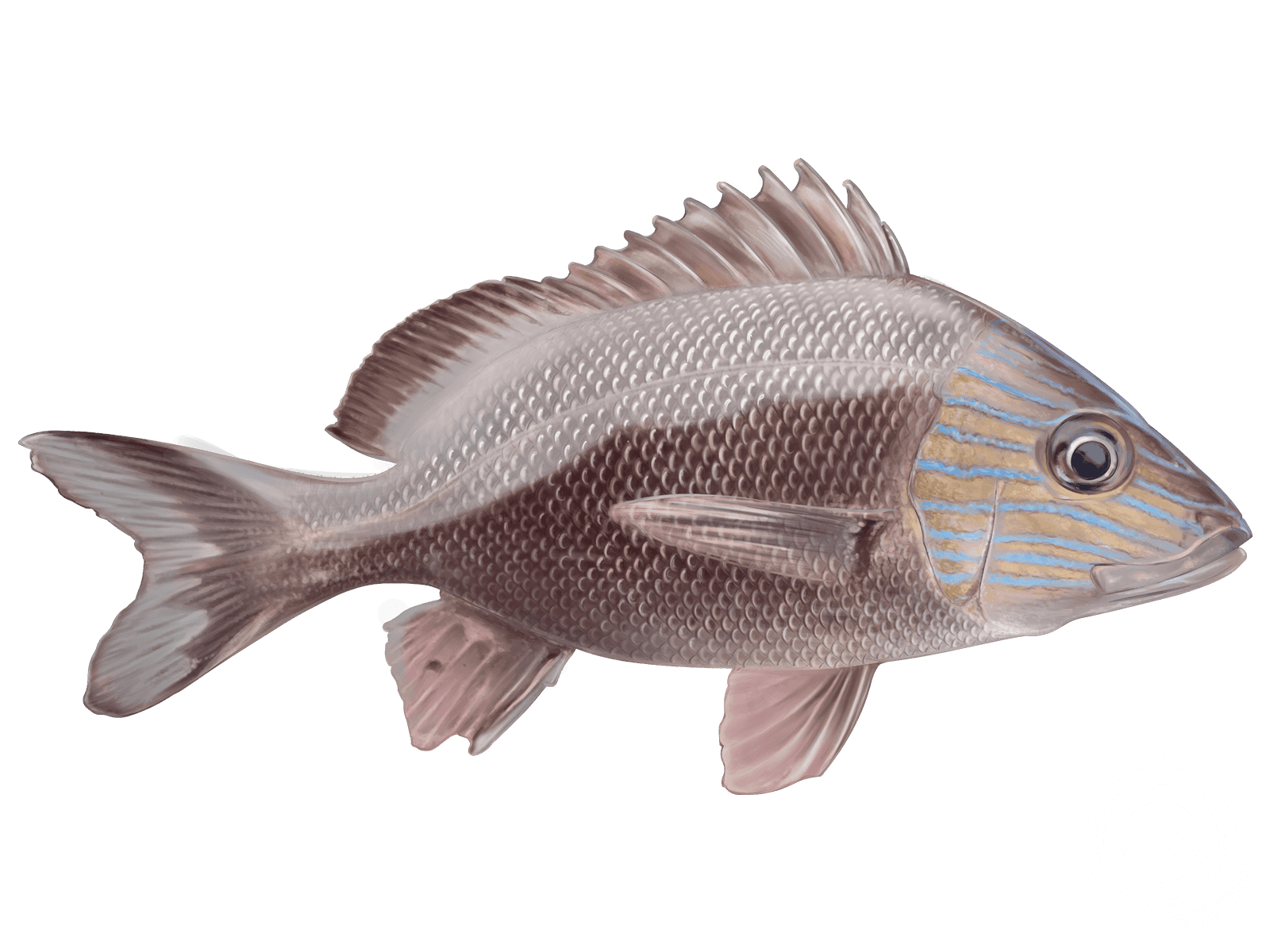White Grunt

Species Details
Haemulon Plumierii
Haemulidae
Perciformes
Offshore, Inshore, Backcountry
2 - 6 lbs.
6" - 14"
White Grunt (Haemulon plumierii) Fish Description
Also known as a common grunt, flannelmouth grunt, black grunt, redmouth grunt, boar grunt, gray grunt, white snapper, ruby red lips, and Key West grunt, the White Grunt is native to the Atlantic Ocean.
The White Grunt’s body is silvery-blue to creamy yellow and bronze in color. It has numerous vertical stripes colored blue and yellow. However, it can also change its colors depending on its environment. The White Grunt resembles the French grunt and the blue striped grunt; sometimes, these cousins would school together.
The White Grunt has a distinct red snout and an elongated almond-shaped body. It also has a forked caudal tail and falcate pectoral fins. Its anal and dorsal fins are completely embedded with scales. This species has a strong and fixed lower jawbone, unlike snappers or groupers. The White Grunt also has numerous rough teeth and dorsal spines.
White Grunts have no canines; instead, they have small and blunt teeth on the jaws and none on the roof of their mouths. Their pharyngeal teeth, however, are well developed.
Diet and Size
The White Grunt, as a nocturnal and typical carnivore, feasts on mollusks, echinoderms, annelids, and benthic crustaceans especially shrimp. The young White Grunt feeds on copepods and plankton. White Grunts are prey to the shark, barracuda, lizardfishes, groupers, and snappers, among others.
On average, the White Grunt can grow from 6 up to 12 inches and weigh about 5.5 pounds. It can weigh up to 15 pounds and some are recorded to have reached 20 inches in length. The average life span of White Grunts is 9 to 12 years.
Interesting Facts About the White Grunt
- The White Grunt produces the “grunting” sound by grinding its pharyngeal teeth in the back of its throat; its grunting sound is amplified by the air bladder. This sound is a call of distress; for example, the White Grunt’s grunt can be heard when it’s caught by anglers.
- A famous fish dish in Florida with the White Grunt as its main ingredient is called “Grits and Grunts”.
- Sometimes, White Grunts are fished in Haiti using dynamites.
- White Grunts confront each other when fighting for territory by pushing each other on the lips with their mouths agape.
White Grunt — Fishing Techniques
Anglers like to fish for White Grunts because they are prized game fish. Furthermore, the flaky white flesh of this species is highly edible. However, it has little commercial value. Instead, the White Grunt is caught and sold as a common aquarium pet.
Since the White Grunt is an opportunistic eater, anglers can commonly capture them using a variety of artificial and natural baits.
White Grunts can be caught using hook and line especially in the southeastern waters of the US. Anglers can also capture them using seines, bottom trawls, and fish traps.
The IUCN does not consider the White Grunt vulnerable or endangered.
Habitat and Distribution
The White Grunt is commonly found in areas like reefs, docks, and mangroves. They generally live offshore, but the young White Grunts are located inshore.
They thrive in the waters of the Western Atlantic from Chesapeake Bay down to Brazil through the Gulf of Mexico and the Caribbean. It lives in shallow areas from the shoreline ranging from 0 to 98 feet in depth. At times, the White Grunt stays in hard bottoms as deep as 115 feet.







